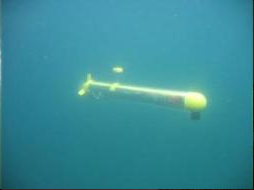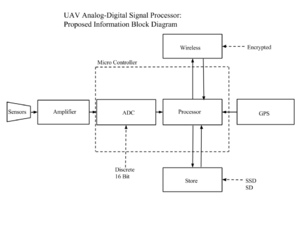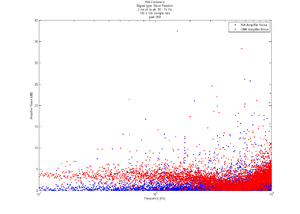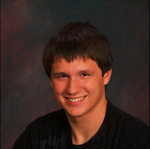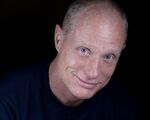Autonomous Underwater Vehicle Sensor Processing
| Autonomous Underwater Vehicle Sensor Processing | |
| Sponsor: | CISR |
| Team Name: | LeBlosser |
| Duration: | Spring 2015 - Fall 2015 |
| Faculty Advisor: |
|
| Mentor: |
|
| Students: | |
To improve the analog/digital data processing system aboard the Automated Underwater Vehicles being developed by the Center for Intelligent System Research (CISR).
Problem Definition[edit | edit source]
The current analog/digital data processing system is too large and has too much noise. It also is unable to off-load the data without opening up the AUVs. Our main goals are to reduce the size of the system, reduce the noise and add wireless capabilities.
Background[edit | edit source]
Why Have Sensors on the AUVs The sensors on the AUV allows for extensive data collection that can be used to navigate, identify ships, and detect anomalies in the water. This task is critical as an extension for naval weapons systems.
Specifications[edit | edit source]
Deliverables[edit | edit source]
Design[edit | edit source]
Design includes the testing and selection of the amplification system, wireless system, data storage, and the ADC processor block. The first component to be designed was the amplification system.
Testing[edit | edit source]
Extensive testing of the amplification system has been conducted to ensure maximum noise reduction as told in the deliverables. This included comparing three different amplifiers, the carderock (ONR), instrumentation amplifier (INA), and the dexter amplifier. To test them a spectrum analyzer was used to compare frequency responses and a Matlab code was then implemented to compare the noises. Here are the results of the comparisons:
Project Learning[edit | edit source]
Team Information[edit | edit source]
| Kevin Blosser | Interests: Electromagnetic Theory and Antennas. |
| Electrical Engineering | |
| Hometown: Boise, ID | |
| Email: blos6439@vandals.uidaho.edu | |
| Chris LeBlanc | Interests: Digital Design and Software. |
| Computer Engineering | |
| Hometown: San Diego, CA | |
| Email: lebl8900@vandals.uidaho.edu |
Document Archive[edit | edit source]
Meeting minutes and agendas: Media:2105 AUV meetingminutes.PNG
